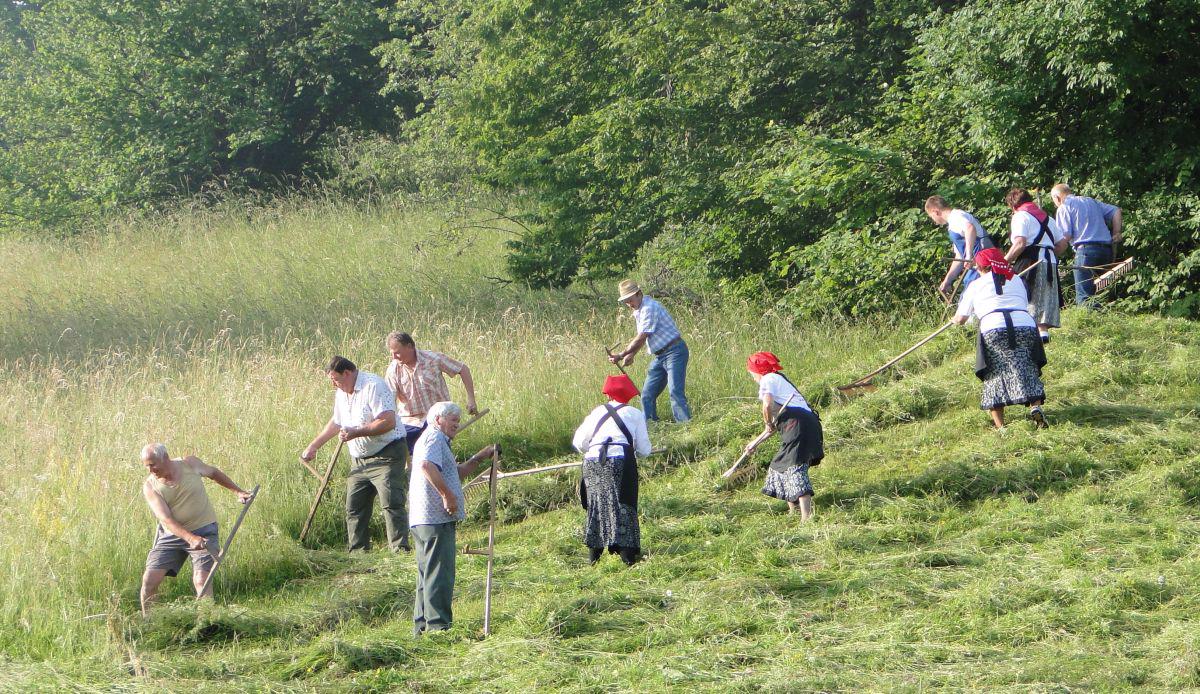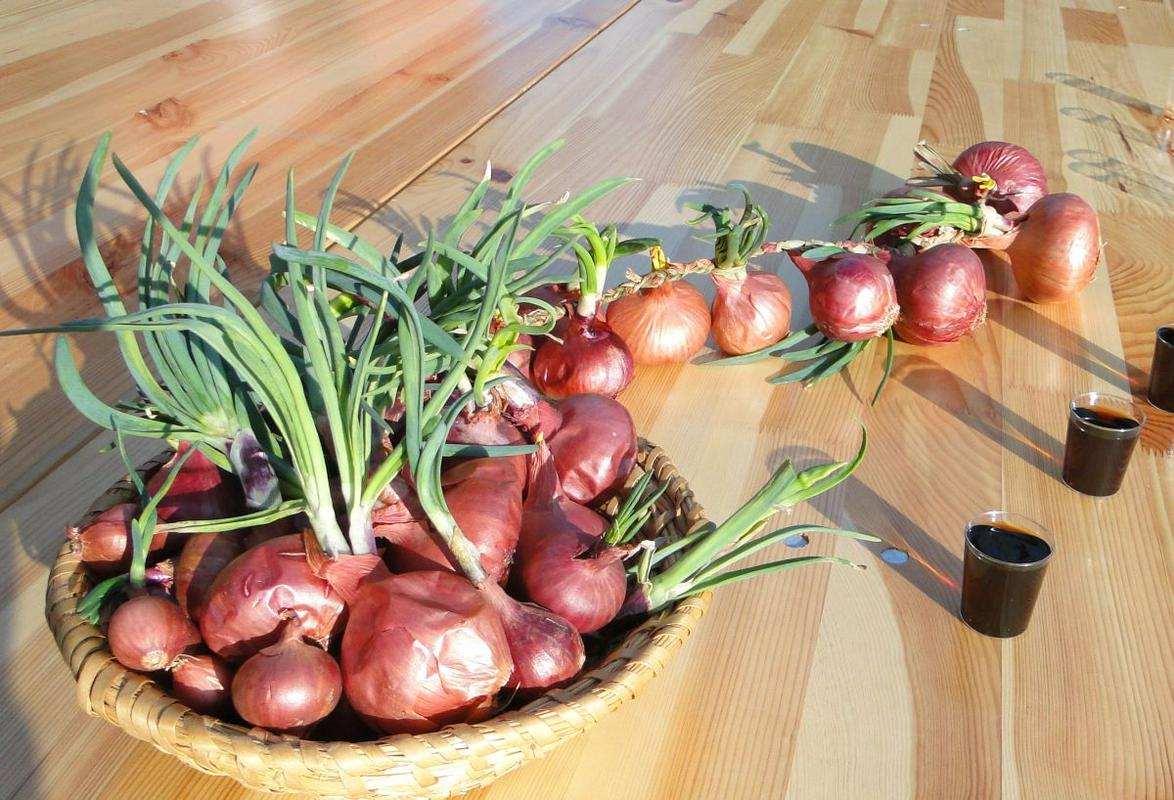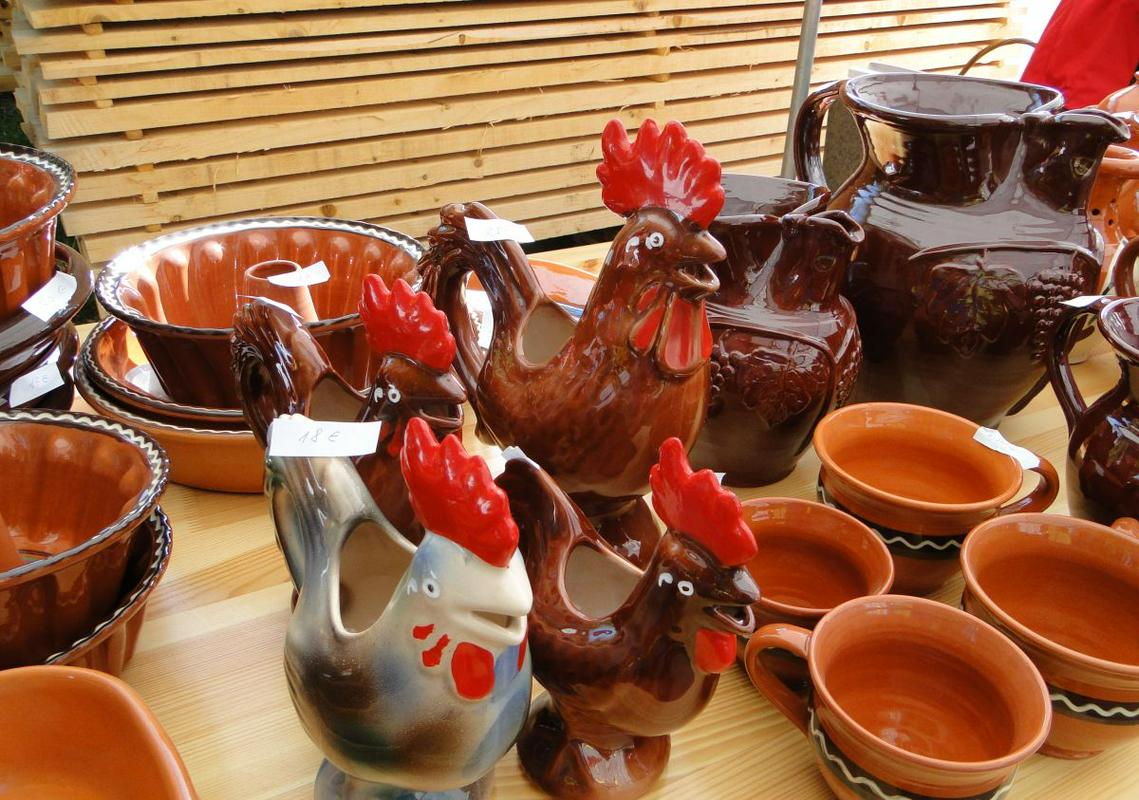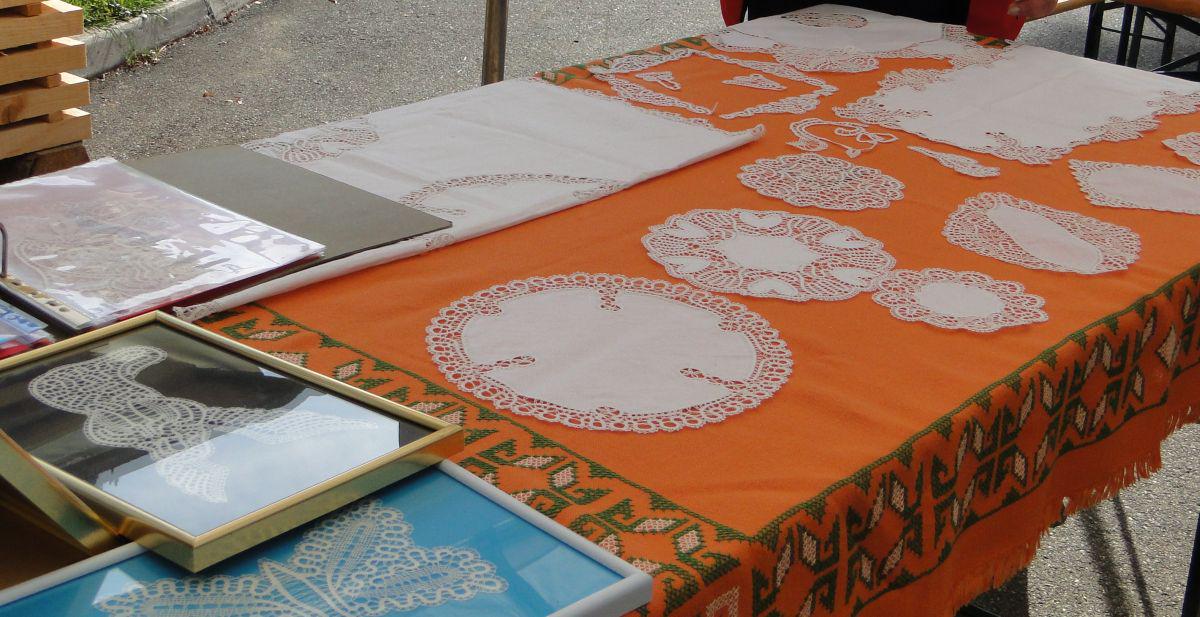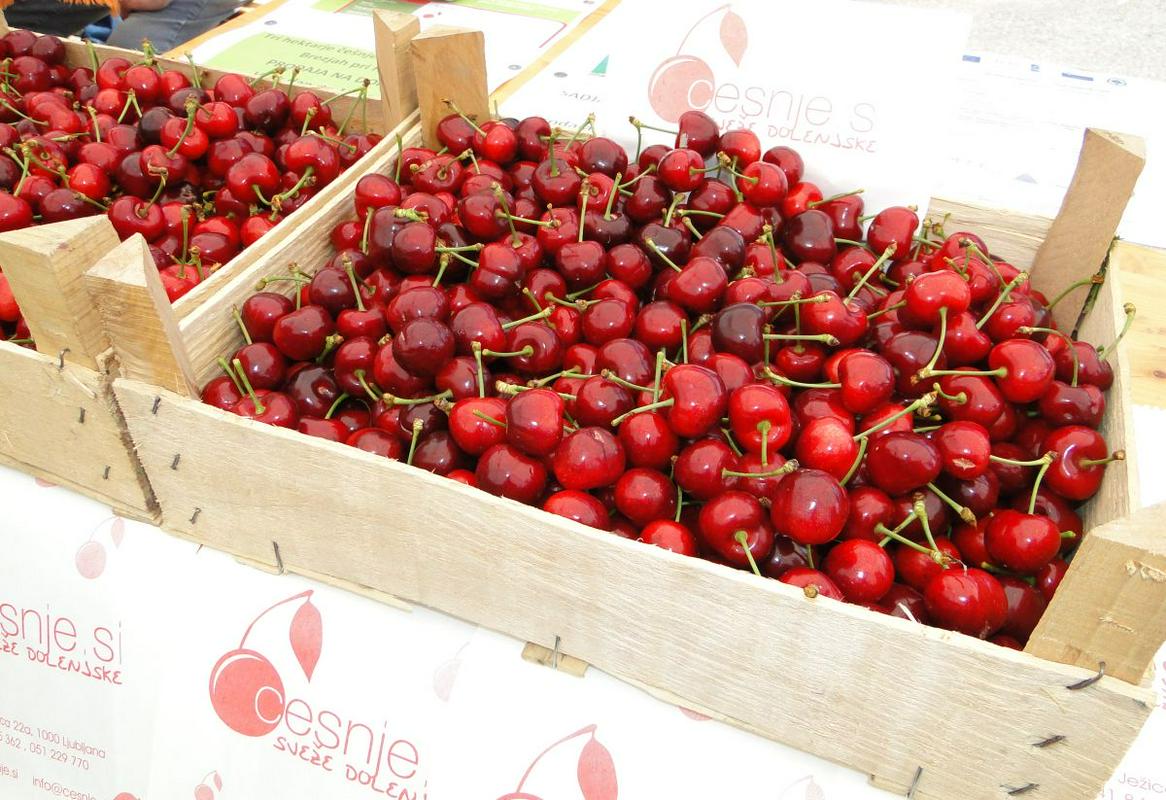
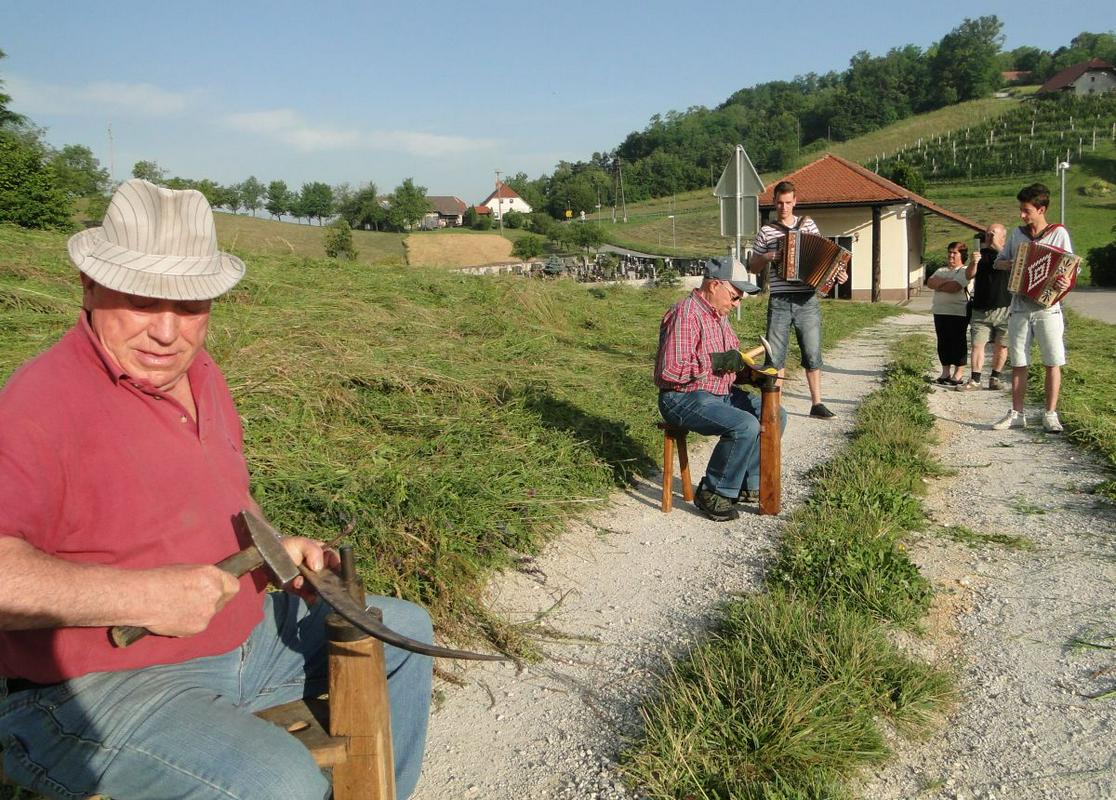
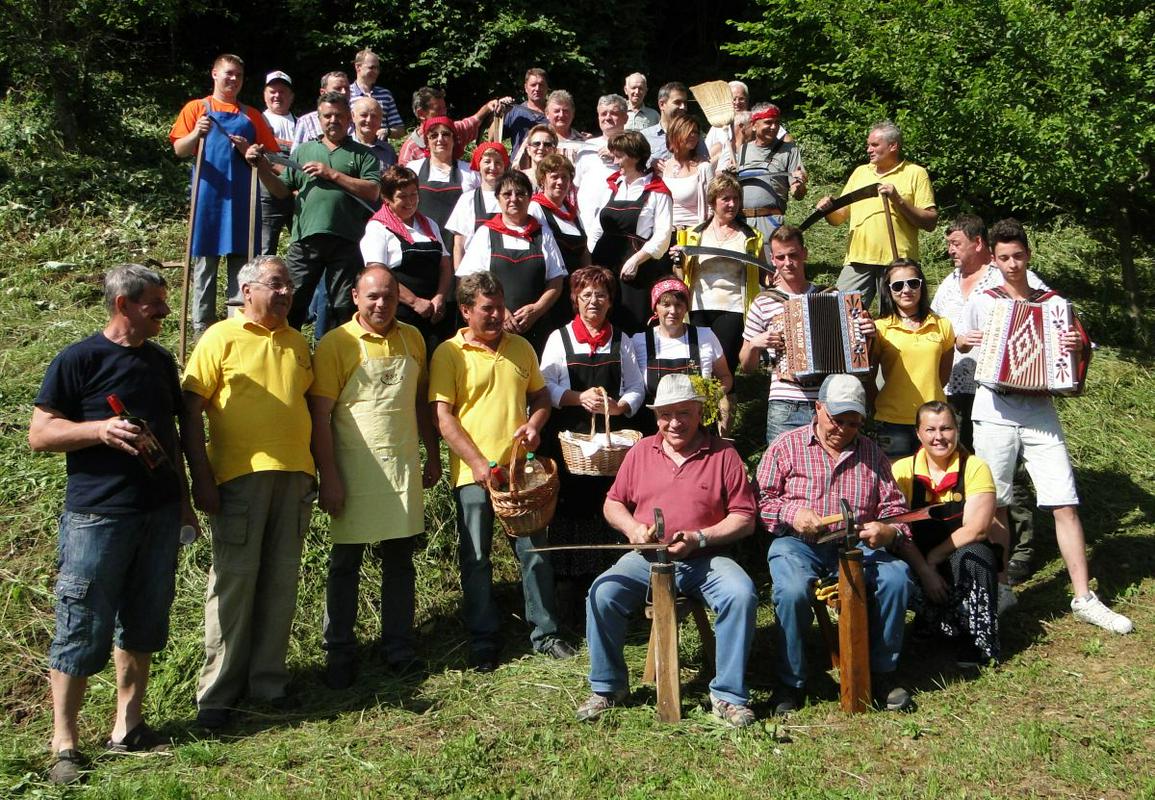

In a Lower Carniola village every June mowing of the parish meadow at Cavsar is organized; the steep terrain makes machine mowing impossible. Several years ago some individuals decided to organize the collective mowing in the village, and during the last years the organization was taken over by the local tourist society Lovrenc. "It is not only about hay harvest. We want to preserve the tradition, the custom, and we would like the young generation to learn how it was done. We already have several young mowers who like to participate," says the president of the society Alojz Kerin.
He told us that in the most frequented year the number of mowers and rakers exceeded 50, this year over 30 of them participated. "But we managed to mow the meadow quickly, before the heat became too intense."
"We usually start at 7, when there is still dew, but in the old times they said that it was the best to mow when there was still a lot of dew, so the young men usually got up at 2 a.m. If there was moonlight, they worked in the night and thus avoided the heat of the day. Scythes had to be prepared the previous day, and the blades had to be well peened, and sharp," explains Kerin. That was usually done by older men, masters.
We wondered how difficult it was to mow in a group, and if great strength was needed. Our host told us that not only strength matters, although it is required. "The first mower had to be good, and strong – as first he had to mow a double swathe. As he didn't follow the very edge of the plot, perhaps he even crossed to the neighbouring one, he had to mow over the same line again, it meant mowing the same row twice," says Kerin. He told us that all the mowers had to be experienced, or those coming behind could catch them. "And that would be a disgrace – there would be no end of teasing the mower who was too slow."
During hay harvest scythes were peened on the meadow as well. "One or two would be in charge of peening the scythes. They had special stools equipped with a small anvil ('žabica' – frog in Slovenian) to support the scythe. The scythe is then peened with a special narrow hammer ('klepec' in Slovenian). The old mowers knew how to choose the right scythe: when buying a new one, they grabbed it by the heel and hit something hard with it. The sound it made told them which scythe was really good." The thinner the sound the harder the scythe was, better tempered, and better altogether, but it was more difficult to hammer. New scythe had to be peened twice: at first to make it thinner, and then to sharpen it.
Then rakers took over…
So, men got up early in the morning and mowed the grass, and with the daylight rakers came to spread the swaths. "If the grass is exposed to dew for too long, it doesn't dry well, and it is also wrong if it remains in piles. This year we had 8 to 10 rakers dressed in traditional clothes, and it was a nice sight on the hill."
Food gives strength
As it was hard manual work, a substantial meal was required. Mowers used a lot of energy, and a shot glass of brandy was mandatory as well. "Sometimes the mistresses of the house brought breakfast to the meadow quite early, and we follow the custom and have a modest breakfast during mowing. When the work is done an abundant meal is served, as they used to: cabbage, beans, some meat," he explained the old custom.
Some of the young have learned to use scythe, out of interest for preserving the cultural heritage, but unfortunately their number is small. The members of the society hope this will change in future. "I hope we'll keep preserving the tradition, but the sad fact is that there is less and less interest among people. Due to the crisis people have a lot of other things to worry about; the young are not interested enough in continuing the tradition. The same mowers come back every year, there are no new ones."
Preserving a number of old customs
Besides hay making a number of old customs are shown as well – loading hay, raking hay into piles and making haystacks, and last year a competition was organized in putting together the village hay cart. An important role in the event is taken by the original local cuisine. "We consider that important, as we are working on a project The Best from Raka, and under this brand the producers will be able to sell their produce and their products."
Ksenja Tratnik, translated by G. K.




















































